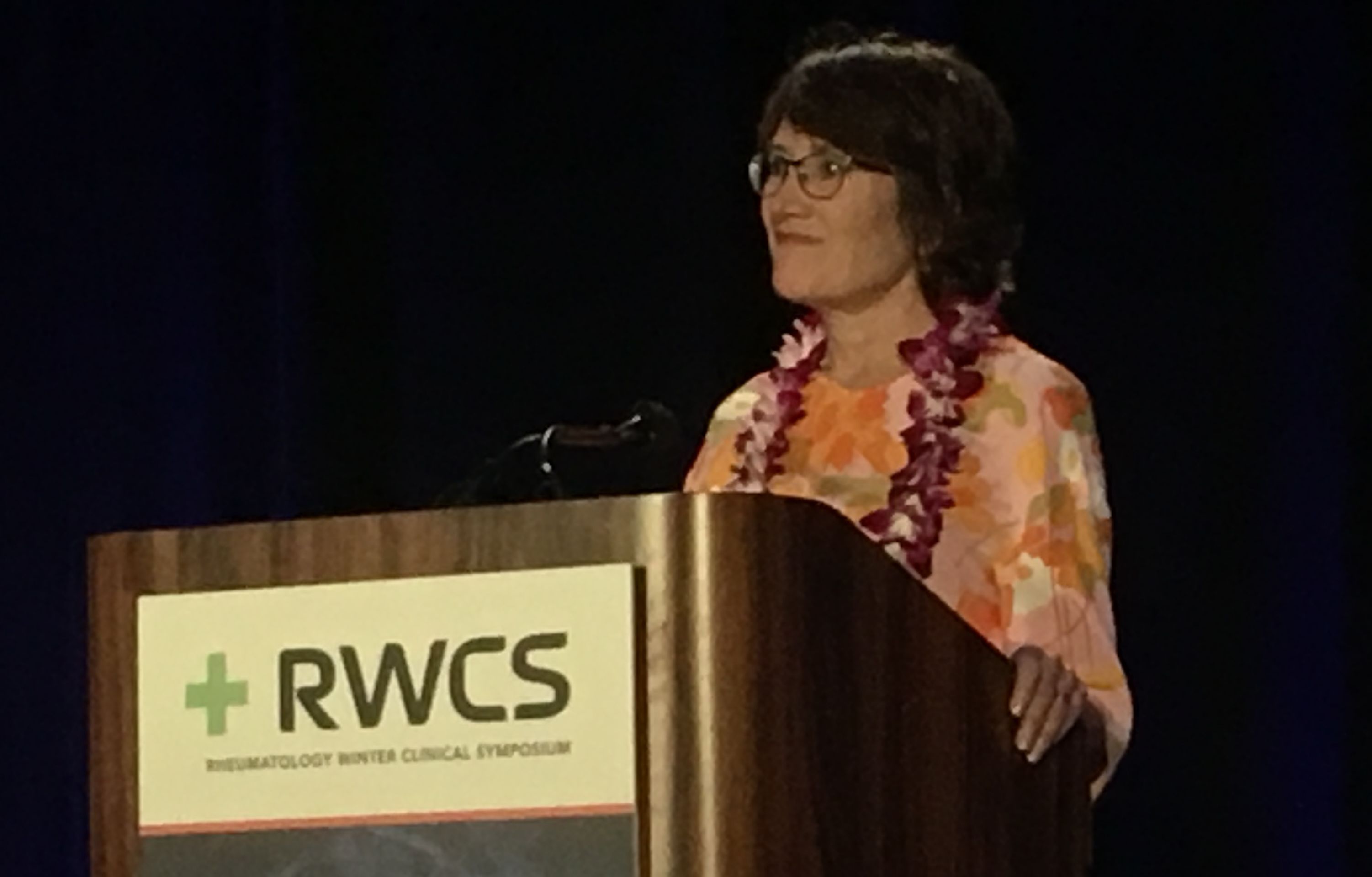Diagnosing, managing chronic osteomyelitis comes with challenges

MAUI, Hawaii — Chronic recurrent multifocal osteomyelitis may now be referred to as chronic nonbacterial osteomyelitis and can present clinicians with a number of challenges in diagnosis and management, according to a presenter at the 2020 Rheumatology Winter Clinical Symposium.
“The lesions can be anywhere around the body, with about half of them in the lower extremities,” Anne M. Stevens, MD, PhD, of the department of rheumatology at Seattle Children’s Hospital and affiliate clinical professor in the department of pediatrics at the University of Washington, told attendees. “The reason that it is so rare, and that families have to go through this terrible journey, is because we do not really know when it is an infection, when it is a malignancy, and when it is chronic nonbacterial osteomyelitis, or CNO.”
Stevens told attendees chronic recurrent multifocal osteomyelitis (CRMO) was first described in 1972 as a symmetrical multifocal osteomyelitis, primarily impacting children. “It is a diagnosis of exclusion,” she said.
The umbrella term of CNO has been suggested largely because the disease can be based on specific, multifocal, or symmetric sites (chronic multifocal cleidometaphyseal osteomyelitis, chronic recurrent multifocal osteomyelitis, chronic sclerosing osteitis, etc.); it can be based on concurrent cutaneous disease (pustulotic arthro-osteitis, synovitis, acne, pustulitis, hyperostosis osteitis, bone lesions of acne fulminans); or based on a mixture of both (clavicular hyperostosis and acne arthritis, sternoclavicular pustular osteitis). “What’s in a name?” Stevens said.

Demographic and incidence rate data show that the disease primarily occurs in children aged 9 to 10 years, with a 2:1 ratio of girls to boys and 90% of cases reported in white children from Western countries.
That said, Stevens suggested that underdiagnosis is common, with 0.4 cases reported for 100,000 children per year in a recent German registry. However, findings from a single German center showed equal incidence of osteomyelitis and CNO between 2004 and 2014. “Increased awareness has resulted in more referrals,” Stevens said.
The key message Stevens hoped to convey was when to suspect CRMO. Intermittent or persistent focal bone or joint pain that may or may not worsen at night is at the top of the list. Sports participation may decrease. Affected areas include the clavicle, mandible, lower extremities and spine. Local swelling or warmth may also occur.
While lab results can be normal, typical extra-osseus manifestations may suggest the diagnosis. Biopsy may be used when in doubt to prevent misdiagnosis of malignancy or infection.
Treatment targets may include TNF, IL-1 and IL-23. Bisphosphonates may also have utility.
“For monitoring, we suggest whole body MRI, because the lesions can be anywhere,” Stevens said. – by Rob Volansky
Reference:
Stevens A. CNO/CRMO/SAPHO: Autoinflammatory disease(s) of the Year? Presented at RWCS Annual Meeting; Feb. 12-15, 2020; Maui, Hawaii.
Disclosures: Stevens reports having a PD-L1 patent with Quest Diagnostics; research collaborations with Kineta and Seattle Genetics; fellowship support from Pfizer; and being an employee of Janssen Pharmaceuticals.








